Feeding base of beekeeping
The value of fodder stocks in the nest of bees
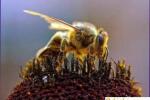
Bees always collect nectar, if there are blooming melliferous plants that release nectar, and if the weather does not interfere with their flights (rain, strong wind, low temperature). However, in the spring, the arrival of
Pollination of pollen by bees
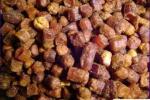
The bee sheds the update in the cell with the help of the spurs on the middle legs. Then the other bees flatten and compact the refresh. Gradually, the cell accumulates many layers of pollen
Processing of nectar in honey
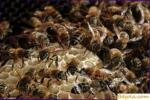
Nectar, in addition to sugar, contains mineral salts, acids, vitamins, enzymes, nitrogenous, dextrin-like, aromatic and other substances, as well as yeast (spores of fungi) that enter it from the air. Nectar, collected by bees from
Giving honey an acid reaction

High concentration of sugars of honey ensures its long-term preservation. But bees have a method that reliably protects this product from spoilage during long-term storage: bees give the honey a sharply acid reaction (active acidity),
Feeding bees with honey-pear mixture

Medo-perga mixture is given to bees in the absence of pollen in nature, and in the nests of bees – pergh. In a mixture consisting of 50% perga (or freshly renewed) and 50% honey, water
Meadows of meadows and pastures

In Ukraine, on the floodplains of rivers and streams, there are large areas of meadows. They grow many honey plants that are important for beekeeping. Distinct meadows are flooded, dry and forest. The vegetation of
Soy flour replaces penguin
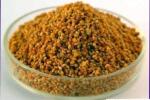
For a long time already beekeepers noticed that in the absence of pollen in nature, bees willingly collect and carry flour in beehives (in the form of patches), visiting mills, barns, warehouses and other premises.
Feeding bees
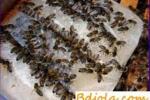
Feeding bees is a big and laborious work. Therefore, the apiaries should take measures to provide bee colonies with fodder, at least 18 kg of honey in the honeycomb, for each bee family for the
Functions of the proboscis and honey beetles of the bee
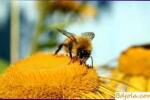
To collect and bring nectar to the hive of bees, as well as in other insects (Hymenoptera), feeding on nectar, in the course of evolution have developed very sophisticated organs: proboscis licking-sucking type that bees
Feeding bees treacle
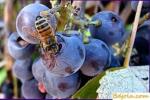
To use sweet substances for feeding bees, it is necessary to know if bees are able to assimilate them, and if they are capable, then to what extent. There is a simple and sufficiently reliable
Harvesting, storage and use of honey combs
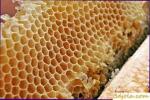
Prepare winter-spring honey reserves should be in the form of full honey combs with sealed cells. Honey in the sealed cells is easier to store, since it is isolated from the surrounding air. In unsealed
Procurement, storage and use of honeycomb with perga
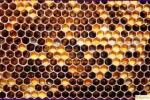
The bees primarily consume freshly introduced pollen. But if it is not enough or the shoulders can not make it because of the bad weather, or there are no flowering pollen plants, they consume the
Need of a bee family in the stern

When organizing a beekeeping farm, it is necessary to be able to calculate how many bee colonies can be kept under given specific conditions or what honeybase should be created for the required number of
Schemes of pollen catchers
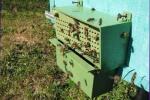
Receiving pollen from plants or pergs from honeycombs is a very laborious process. You can get the pollen already collected by bees, by selecting their updates from the tap when returning to the hive. Practical
Saccharum dough

On large apiaries, sucrose dough (kandi) is used successfully for feeding bees in the spring. Top dressing has a number of advantages in comparison with the feeding of sugar syrup. There is no time-consuming work
